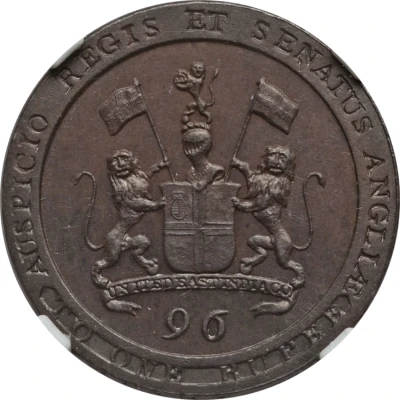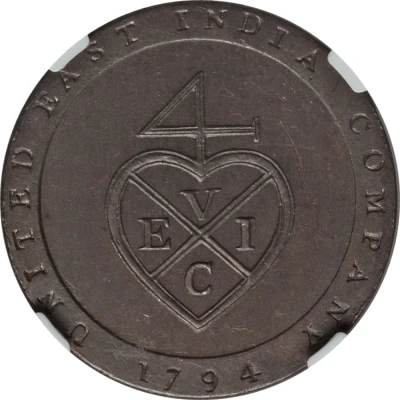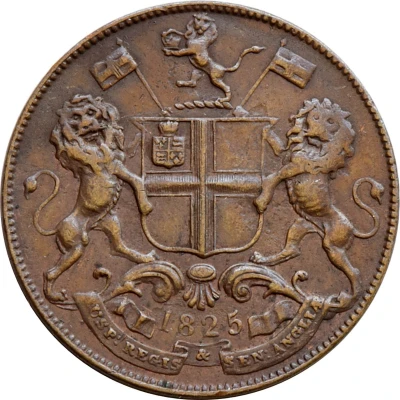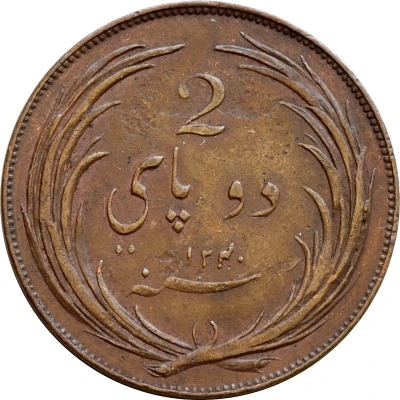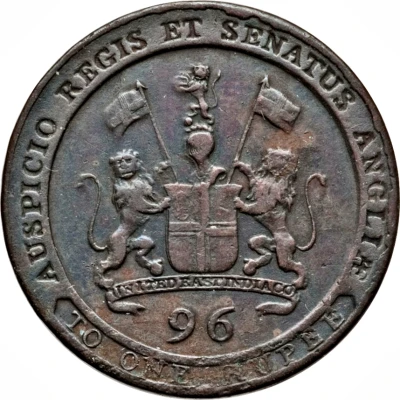
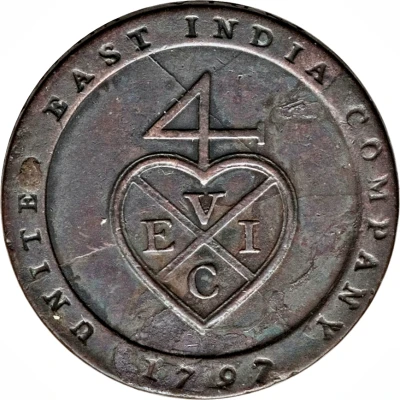

© Ben Dettweiler (CC BY)
1⁄96 Rupee ½ Dub
1797 year| Copper | 6.67 g | 24.5 mm |
| Issuer | Madras Presidency (British India) |
|---|---|
| Type | Standard circulation coin |
| Year | 1797 |
| Value | 1⁄96 Rupee |
| Currency | Rupee (1691-1835) |
| Composition | Copper |
| Weight | 6.67 g |
| Diameter | 24.5 mm |
| Shape | Round |
| Orientation | Coin alignment ↑↓ |
| Demonetized | Yes |
| Updated | 2024-10-05 |
| Numista | N#22401 |
|---|---|
| Rarity index | 69% |
Reverse
Balemark of the Company surrounded by a broad flat rim. On the rim is the incuse legend: United East India Company 1797
Lettering:
UNITED EAST INDIA COMPANY
4
V E I C
1797
Translation: United East India Company
Edge
Edge lettering OR Plain
Comment
- Pridmore# 323- Pridmore# 324 Proof
Interesting fact
The 1797 1/96 Rupee (½ Dub) coin from Madras Presidency (British India) made of Copper weighing 6.67g is interesting because it was issued during a time when the British East India Company was facing a severe coinage crisis in India. The Company had been issuing coins with low silver content, which led to a loss of confidence in the currency. In response, the Company introduced a new coinage system in 1797, which included the 1/96 Rupee coin made of copper. This coin was the smallest denomination in the new system and was designed to be more affordable for the common people. Despite its small value, the coin was still made of copper, which was a valuable metal at the time. This fact highlights the efforts of the British East India Company to address the coinage crisis and ensure that the currency was accessible to all segments of society.
